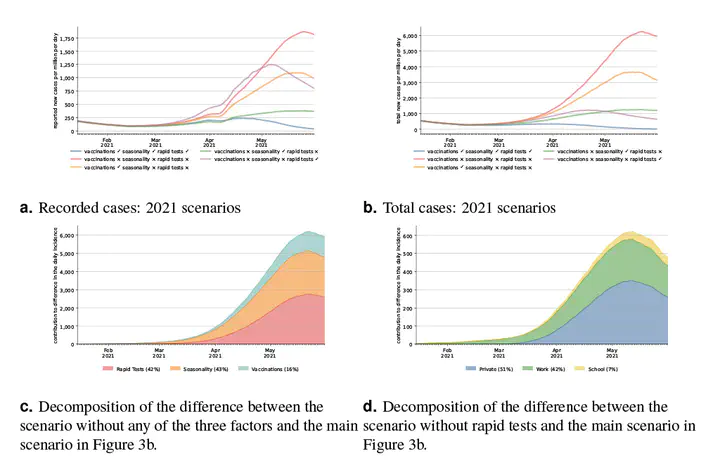The Effectiveness of Testing, Vaccinations and Contact Restrictions for Containing the CoViD-19 Pandemic
 The effect of different interventions on recorded and actual infections
The effect of different interventions on recorded and actual infections
Abstract
In order to slow the spread of the CoViD-19 pandemic, governments around the world have enacted a wide set of policies limiting the transmission of the disease. Initially, these focused on non-pharmaceutical interventions; more recently, vaccinations and large-scale rapid testing have started to play a major role. The objective of this study is to explain the quantitative effects of these policies on determining the course of the pandemic, allowing for factors like seasonality or virus strains with different transmission profiles. To do so, the study develops an agent-based simulation model, which explicitly takes into account test demand and behavioral changes following positive tests. The model is estimated using data for the second and the third wave of the CoViD-19 pandemic in Germany. The paper finds that during a period where vaccination rates rose from 5% to 40%, seasonality and rapid testing had the largest effect on reducing infection numbers. Frequent large-scale rapid testing should remain part of strategies to contain CoViD-19; it can substitute for many non-pharmaceutical interventions that come at a much larger cost to individuals, society, and the economy.